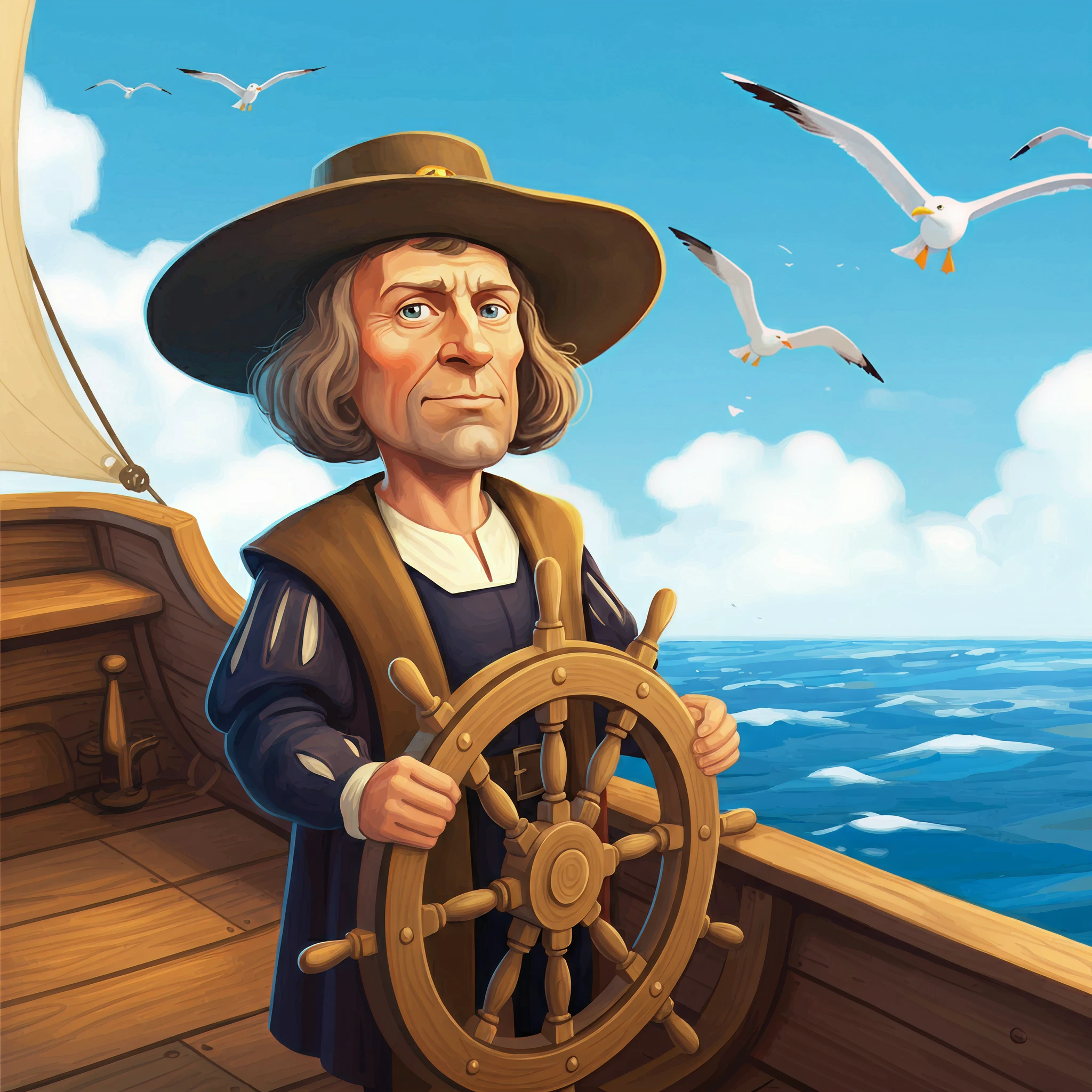Christopher Columbus’s voyages into the New World have inspired countless tales, serving as the backdrop for educational content, movies, and cartoons. With an aim to teach kids through entertainment, many cartoon creators have ventured into his story, making history accessible and fun. However, how accurate and sensitive are these portrayals? Let’s explore how Columbus’s voyages are depicted in cartoons, evaluate their educational aspects, and provide recommendations for age-appropriate viewing.
What is a “Christopher Columbus Cartoon”?
A Christopher Columbus cartoon simplifies the explorer’s historical feats and failures into a kid-friendly, animated narrative. These cartoons often focus on Columbus’s 1492 voyage in a fantastical way, using humor, whimsy, or fictionalized plots to keep children engaged. But while they’re entertaining, it’s essential to balance fun with an accurate and culturally sensitive representation of history.
The Educational Value of Christopher Columbus Cartoons
Cartoons about Christopher Columbus can be fantastic tools for teaching young viewers about world history. Here are some benefits they offer:
- Engagement through Visual Learning
Animation catches children’s attention and breaks down complex historical events into digestible, visualized stories.
- Introduction to Exploration and Navigation
Kids learn about concepts like sea voyages, trade routes, and the Age of Exploration in a way that sparks curiosity.
- Simplification of Historical Context
Younger audiences appreciate cartoon portrayals, as they deliver educational content in simple terms and sprinkle in lessons about adventure, ambition, and discovery.
But while many cartoons aim to educate, some fall short of delivering historical accuracy or ignore important cultural contexts.
Example of a Christopher Columbus Cartoon
An example of this ambitious yet flawed attempt is the 1992 film The Magic Voyage. This cartoon reimagines Columbus as a bumbling explorer aided by a sarcastic, talking woodworm named Pico. The plot includes saving a magical firefly from an evil captor, adding layers of pure fiction to the historical voyage.
While The Magic Voyage might offer some fun moments for children through its fantastical storytelling, it is riddled with historical inaccuracies and questionable creative liberties. Critics have pointed out issues such as:
- Far-Fetched Storylines – With magical creatures and farcical events, the narrative strays far from historical realism.
- Cultural Insensitivity – Like some older historical content, it lacks thoughtfulness in addressing themes related to Indigenous peoples.
- Poor Educational Value – The fictionalized elements offer little insight into the real complexities of Columbus’s expeditions.
Instead of using such heavily fictionalized portrayals, parents and educators may benefit from more balanced content that pairs storytelling with accurate historical details.
Culturally Sensitive Cartoons
The way Columbus’s story is told has evolved in light of growing awareness around the devastating impact European explorers had on Indigenous peoples. Modern educational cartoons are beginning to approach the story of Columbus with more sensitivity, highlighting both his accomplishments and the consequences of his endeavors.
Features of Better Cartoon Representations:
- Inclusive Narratives
Acknowledge the perspective of Indigenous cultures and the repercussions of colonialism.
- Balanced Storytelling
Show both the adventurous spirit of exploration and its real-world implications.
- Age-Appropriate Themes
Present facts in a non-intimidating way that invites children into discussions about morality, fairness, and consequences.
Parents and educators should seek cartoons that approach history through this balanced lens to provide kids with a comprehensive understanding of the topic.
Recommendations for Parents and Educators
If you’re thinking of introducing the story of Christopher Columbus to children through cartoons, consider these tips for an enriching experience:
- Watch Together
Sit down with your kids and watch the cartoon alongside them. This allows you to guide discussions and clarify inaccuracies.
- Pair with Real History
Use the cartoon as a fun starting point, but provide kids with additional information about the historical events to balance the storytelling.
- Choose Age-Appropriate Content
Look for cartoons or animated films designed specifically for your children’s age group. This ensures themes and complexity are suitable for their understanding.
- Introduce Diverse Viewpoints
Balance Columbus-centric narratives with educational resources that highlight Indigenous cultures and their rich histories.
Where to Find Christopher Columbus Cartoons
For thoughtful educational material, consider animated documentaries or kid-focused history programs rather than entirely fictional cartoons. Platforms like PBS Kids, BBC Earth Kids, and National Geographic Kids may offer content that better meets this balance.
Final Thoughts
Christopher Columbus animated content can be a fun and engaging way to introduce children to history. However, the real value lies in supplementing these stories with accurate, factual information and discussions about cultural sensitivity.
By understanding both the benefits and limitations of Christopher Columbus cartoons, parents and educators can create opportunities for meaningful conversations, ultimately helping kids develop a balanced perspective on history.
Looking for more resources to enhance your child’s learning experience? Check out our curated educational materials or speak to our specialists for personalized recommendations on kid-friendly historical content.








